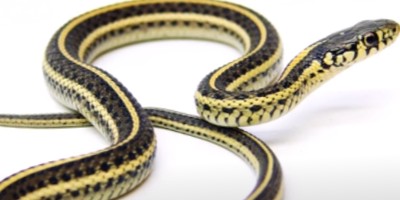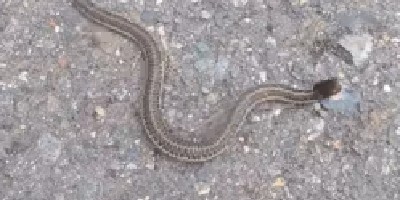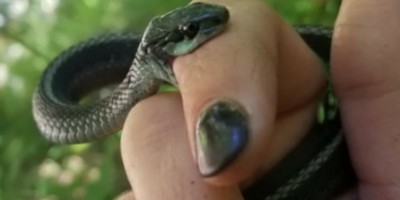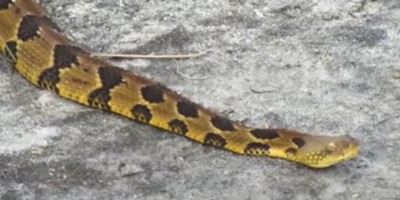
Welcome to denversnakes.com! I am David, a snake enthusiast living in Denver, CO. Many people don't know that Denver is in fact full of snakes! You just need to know where to find them - they can often be shy and elusive. Some Colorado snake species are more common outside of the city limits, in different parts of Denver County CO, but many types of snakes are indeed common in the more urban parts of Denver. This guide is meant to help educate you about the beautiful snakes of Denver, and to help you identify the most common snakes of Denver, as well as the venomous snakes of Denver that you should learn to recognize and avoid. If you want more detail, click here for my complete list of ALL snake species in Denver. Remember the following:
- Most snakes of Denver are harmless and don't want to encounter you
- Venomous snakes exist but are uncommon in Denver, Colorado
- Snakes eat rats and mice and are a valuable part of the Colorado ecosystem
- Never kill a snake - if you leave a snake alone, it will leave you alone.
Common Snake Species in Denver
 Plains Black-headed Snake:
The plains black-headed snake (Tantilla nigriceps) isn’t easy to miss. Its body is white or a pinkish hue, with a characteristic black head. Unlike other black-headed snakes – Chihuahuan and Yaqui – this plains snake lacks a light neck collar. At their longest, they are no more than 15 inches. These snakes are secretive creatures, seeking refuge amongst leaf litter or in their burrows. As such, they are common in rocky or grassy prairies and hillsides. Their range stretches from Mexico out into the Great Plains. They are non-venomous and pose no threat to humans.
Plains Black-headed Snake:
The plains black-headed snake (Tantilla nigriceps) isn’t easy to miss. Its body is white or a pinkish hue, with a characteristic black head. Unlike other black-headed snakes – Chihuahuan and Yaqui – this plains snake lacks a light neck collar. At their longest, they are no more than 15 inches. These snakes are secretive creatures, seeking refuge amongst leaf litter or in their burrows. As such, they are common in rocky or grassy prairies and hillsides. Their range stretches from Mexico out into the Great Plains. They are non-venomous and pose no threat to humans.
 Western Hognose Snake:
Found from northern Mexico up into Canada, the western hognose snake (Heterodon nasicus) is recognizable for its small but stout body. Coloring can vary wildly between subspecies – likely due to its broad range. But they have the characteristic turned-up nose, common to all hognose snakes. Adults grow to between 15 to 20 inches. If approached, the western hognose will use a series of defensive ploys: loud hiss, flatten and compress its body, and lastly, it will strike. However, they are non-venomous, and so do not pose a serious danger.
Western Hognose Snake:
Found from northern Mexico up into Canada, the western hognose snake (Heterodon nasicus) is recognizable for its small but stout body. Coloring can vary wildly between subspecies – likely due to its broad range. But they have the characteristic turned-up nose, common to all hognose snakes. Adults grow to between 15 to 20 inches. If approached, the western hognose will use a series of defensive ploys: loud hiss, flatten and compress its body, and lastly, it will strike. However, they are non-venomous, and so do not pose a serious danger.
 Western Terrestrial Garter Snake:
The western terrestrial garter snake (Thamnophis elegans), has a distinctive pale central stripe, as well as two on the sides. But despite these distinguishing features, they can be hard to identify. They are found throughout the central US, primarily in forests and grasslands. There they hunt for small mammals, slugs, salamanders, and lizards. Although, some subspecies are semi-aquatic, and so hunt for frogs, toads, and fish. They use constriction to kill their prey. However, their saliva is mildly venomous, with a muscle-killing effect. But symptoms in humans are localized with no recorded cases of serious illness.
Western Terrestrial Garter Snake:
The western terrestrial garter snake (Thamnophis elegans), has a distinctive pale central stripe, as well as two on the sides. But despite these distinguishing features, they can be hard to identify. They are found throughout the central US, primarily in forests and grasslands. There they hunt for small mammals, slugs, salamanders, and lizards. Although, some subspecies are semi-aquatic, and so hunt for frogs, toads, and fish. They use constriction to kill their prey. However, their saliva is mildly venomous, with a muscle-killing effect. But symptoms in humans are localized with no recorded cases of serious illness.
 Common Garter Snake:
Common garter snakes (Thamnophis sirtalis), recognizable for the yellow or grey stripe down their back and one on each side, are common throughout North America. Growing to a maximum length of 54 inches, they have slender bodies and come in a range of colors. Like their cousins, the western terrestrial garter snake, common garters are mildly venomous – though the effect on humans is negligible. Being found near water, they hunt for amphibians, earthworms, and some fish. Due to their fast nature, they are capable hunters of fish and tadpoles. There are multiple subspecies found, though most are of little threat to humans.
Common Garter Snake:
Common garter snakes (Thamnophis sirtalis), recognizable for the yellow or grey stripe down their back and one on each side, are common throughout North America. Growing to a maximum length of 54 inches, they have slender bodies and come in a range of colors. Like their cousins, the western terrestrial garter snake, common garters are mildly venomous – though the effect on humans is negligible. Being found near water, they hunt for amphibians, earthworms, and some fish. Due to their fast nature, they are capable hunters of fish and tadpoles. There are multiple subspecies found, though most are of little threat to humans.
Venomous Snake Species in Denver
 Prairie Rattlesnake:
The prairie rattlesnake (Crotalus viridis), otherwise known as the Great Plains rattlesnake, is one of the few venomous species in Colorado. Though they spend most of their life on dry land, they can climb trees in their search for prey. Their venom is potent – being both a hemotoxin and neurotoxin – so they make formidable predators. They have a recognizable triangular head, with a broad body. Their back is covered in dark brown blotches up to the distinctive rattle tail. Once fully grown, they measure around 3.3 ft. in length.
Prairie Rattlesnake:
The prairie rattlesnake (Crotalus viridis), otherwise known as the Great Plains rattlesnake, is one of the few venomous species in Colorado. Though they spend most of their life on dry land, they can climb trees in their search for prey. Their venom is potent – being both a hemotoxin and neurotoxin – so they make formidable predators. They have a recognizable triangular head, with a broad body. Their back is covered in dark brown blotches up to the distinctive rattle tail. Once fully grown, they measure around 3.3 ft. in length.
 Yellow Rattlesnake:
Venomous snakes are uncommon in Denver, but if you head west, you might come across the yellow or faded rattlesnake (Crotalus concolor). It has a banding pattern on its back that looks characteristically faded. These snakes grow to a little under 30 inches, coming in shades of brown and earthy pink. Their venom is infamously potent, being amongst the most potent in the US. It works as a neurotoxin that leads to paralysis, and so should be treated with great care. However, due to their coloring, these snakes are masters of camouflage, blending seamlessly into their dusty habitats. Despite their potency, they favor smaller lizards and shrews as prey.
Yellow Rattlesnake:
Venomous snakes are uncommon in Denver, but if you head west, you might come across the yellow or faded rattlesnake (Crotalus concolor). It has a banding pattern on its back that looks characteristically faded. These snakes grow to a little under 30 inches, coming in shades of brown and earthy pink. Their venom is infamously potent, being amongst the most potent in the US. It works as a neurotoxin that leads to paralysis, and so should be treated with great care. However, due to their coloring, these snakes are masters of camouflage, blending seamlessly into their dusty habitats. Despite their potency, they favor smaller lizards and shrews as prey.
If you're unsure, you can email me a photo of the snake at info@denversnakes.com and I will email you back with the snake's species. If you found a snake skin, read my Found a Skin? page, and you can email me a photo of the skin, and I'll identify the snake for you. If you need professional Denver snake removal help, click my Get Help page, or see the below website sponsor I found, who provides that service.
Remember, the term is not poisonous snakes of Denver, it's venomous snakes of Denver. Poison is generally something you eat, and venom is injected into you. That said, dangerous snakes are very rare in Denver. The few venomous snakes of Denver County are rarely seen. But they are commonly misidentified, so learn about all the snake species of Denver in order to correctly identify them. These snakes are usually also found in the surrounding towns of Arvada, Aurora, Boulder, Broomfield, Brighton, Castle Rock, Centennial, Cherry Hills, Commerce City, Columbine Valley, Conifer, Denver, DTC (Denver Tech Center), Englewood, Evergreen, Glendale, Golden, Greenwood Village, Highlands Ranch, Ken Caryl Ranch, Lakewood, Littleton, Lone Tree, Longmont, Louisville, Loveland, Morrison, Northglenn, Parker, Sheridan, Thornton, Westminster, Wheat Ridge, and the surrounding areas.
Read our article about:
Reasons Why the City Animal Services Will Not Usually Solve a Snake Issue
denversnakes.com domain and hosting costs made possible by the generous support of this sponsor:
